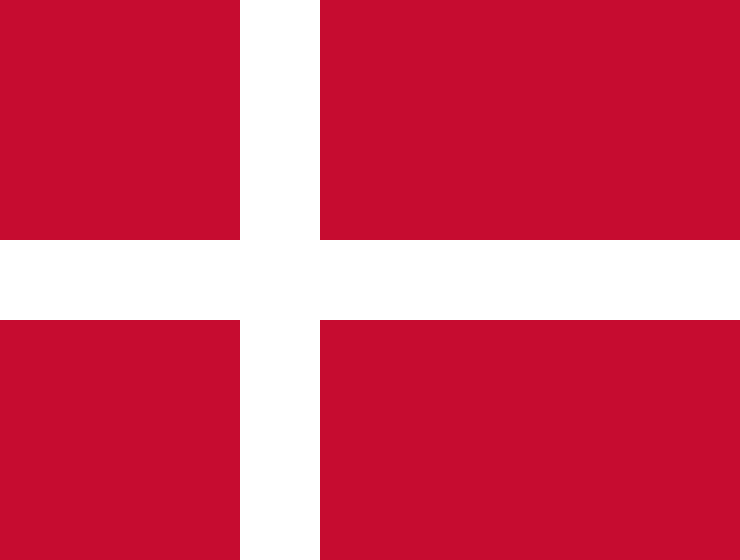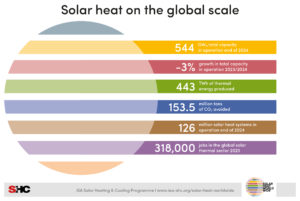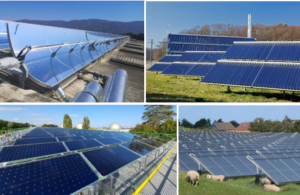Denmark: Arcon-Sunmark Announces Silkeborg Solar Plant Development
August 19, 2016
On 13 July, Arcon-Sunmark, the Danish large-scale solar heating specialist, officially announced that as the chosen turnkey provider, it was beginning construction on the 156,694 m² solar district heating system (110 MWth) on behalf of the Danish city of Silkeborg and its district heating company Silkeborg Forsyning. The plant is scheduled for completion by the end of the year and will then be the largest solar district heating system worldwide.
Engineering company Rambøll, which was in charge of the plant’s design and tender, will also be an advisor to Silkeborg Forsyning during the construction and commissioning of the system.
The Silkeborg solar district heating plant is said to provide 80,000 MWh of solar heat per year (110 MW peak), which would cover 20 % of the annual demand from the district heating network of the town of 43,000. The remaining heat is thought to be supplied by a combined cycle power plant consisting of two gas and one steam turbine. In addition, there will be an electrical boiler added. Alongside the solar system, Silkeborg Forsyning is planning to set up a flue gas condensation system, which should use the waste heat from the combined cycle plant for absorption heat pumps. In the future, the company might add a biomass boiler, too. “Overall, our aim is to generate heat from several sources, in order to optimise production cost and performance,” said Mogens Lyhne, Project Manager at Silkeborg Forsyning. According to him, the most important legal framework driving that development was the municipality’s climate goal. A press release by Silkeborg Forsyning sent out on 6 July stated that the municipality aimed to produce only carbon-neutral heat from 2030 onwards. Danish law also requires district heating companies to decrease energy consumption by a certain percentage each year. In 2015, the stipulated reduction was 3.25 %. The 2016 target is still under discussion, but expected to be between 3.25 and 4 %.
Solar system in conjunction with the combined cycle plant
The system boundary of the turnkey contract is where the flow and return lines (DN 600) of the power plant exit the ground and enter the district heating network. At this point, Arcon-Sunmark delivers the heat and transmits certain signals without any heat exchanger involved. The network has no seasonal storage, but two storage tanks. Silkeborg Forsyning is in the process of setting up two additional daytime tanks with a capacity of 16,000 m³ each. These tanks will also serve to store energy from the combined cycle plant. The company said that the required district heating temperature in summer was usually around 65 to 68 °C. If the storage tanks are at their max after a long period of sunny weather, the temperature from the field can be increased to up to 90 °C. In winter, grid temperatures rise to a maximum of 85 to 90 °C. But because the solar plant will operate in conjunction with the combined cycle plant, it can be used for preheating and does not have to provide the same high temperature levels. “To maximise solar energy production, we are planning to run the solar field at as low a temperature as possible,” said Lyhne.
Arcon-Sunmark will employ large-scale flat plate collectors for high-temperature applications, of which 70 % are type Arcon-Sunmark HT-HEATstore 35/10 and 30 % are type HT-HEATboost 35/10.
The company announced that it would produce the collectors in its factory in Skørping, Denmark. “Of course, we are not talking about just one day of production. But the manufacture of the collectors, field pipework, hydraulic units, building, tank and the field mountings go hand in hand and are part of the overall schedule,” says Christian Stadler, Managing Director of Arcon-Sunmark Germany. The solar field will be divided into four subfields to enable the company to set up the installation and hydraulics on this irregularly shaped piece of land.
Start of construction announced after retesting of Arcon-Sunmark collectors
Although industry insiders had known for months that Arcon-Sunmark had won the contract for the Silkeborg solar plant, the successful conclusion of the tender invitation was not officially announced until after collector retesting for the Solar Keymark certificate had been completed. Retesting had been necessary, as a number of complaints about the Arcon-Sunmark certificates were submitted to the Swedish certification body SP at the end of 2015. The retests were carried out by the SP Technical Research Institute of Sweden, and Ulrich Fritzsche from German TÜV Rheinland Energy was given the role of third-party inspector.
An Arcon-Sunmark press release from 12 July confirmed that “the differences between previous and new performance test results are well within the laboratory’s measurement uncertainty and, thus, well within the 10 % limit according to the Solar Keymark scheme rules.” When asked about the complaints having caused any irritation at Silkeborg Forsyning, Lyhne replied: “Arcon-Sunmark’s solar panels have been tested and certified by SP. We used the Solar Keymark results in our evaluation of the contenders for the job. We believe that Arcon-Sunmark has high-quality products and a very high degree of expertise in producing large scale solar plants.”
More information
Silkeborg Forsyning: http://www.silkeborgforsyning.dk/


